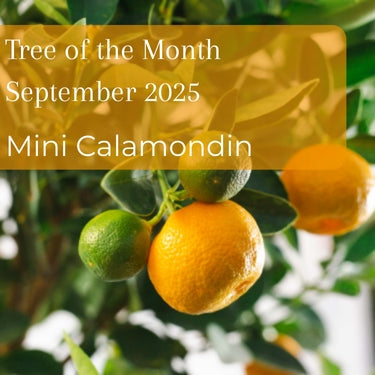
October is the official month of autumn, with the first frosts approaching and trees glowing in vibrant reds and oranges as their leaves fall.
While it might seem that the garden is slowing down, there's still plenty to do and harvest. Follow our top tips below on how to prepare the garden for autumn.
Gardening Jobs in October
Native Tree Saplings in October
Losing leaves but long-lasting: Our native tree saplings will have almost lost all of their leaves now. But don’t worry - this is natural. They'll be flourishing again next year and for many more years.
Place outside: Native saplings are hardy and can handle the UK winter. If you can’t plant them yet, keep them outside and water the rootball when it dries out.
Planting your sapling: Saplings can be planted year-round, but avoid waterlogged or frozen ground. Plant them in a large pot and place in a sheltered spot for winter.
Rose Bushes in October
End of the blooming season: Rose bushes are starting to shed leaves. Prune and deadhead to give them a strong start next year. Don’t be alarmed if they look a bit lacklustre - they’ll bloom beautifully next season.
Place your rose bush outside: Our hardy, English-grown rose bushes can handle the cooler climate. If you’ve just received one, place it outside right away.
Plant your rose bush: You can plant them in large pots or the ground. If the ground is frozen or waterlogged, wait until conditions improve.
Regular Garden Maintenance in October
Sweep up fallen leaves: Regularly sweep leaves to prevent slugs, snails, and fungus. Use the collected leaves to make leaf mould, which can be used in your garden later.
Tidy fallen rose leaves: Clear away fallen leaves from rose bushes to prevent the spread of diseases like blackspot.
Turn your compost bins: Aerating the compost helps it break down faster. Add dry, healthy fallen leaves for extra brown material.
Prepare for the first frosts: Read our guide on preparing for the first frosts to protect your plants.
Prepping Soil and Beds in October
Improve your soil: Now is the perfect time to work organic matter like well-rotted manure into your soil. This will create rich topsoil for next season.
Start mulching: Use bark chips, leaf mould, or well-rotted manure to mulch your beds and borders. Mulching insulates roots and suppresses weeds.
Avoid feeding: Refrain from fertilising in October, as it can encourage weak, leggy growth that won't survive the winter.
Watering Trees and Plants in October
Reduce watering: As the growing season ends and plants go dormant, reduce your watering schedule. Check plants weekly, especially if it's unseasonably warm and dry.
Water early-flowering shrubs: Ensure you water shrubs like camellias, so they produce strong buds for spring.
Pruning Trees and Plants in October
Prune lavender: Prune after flowering to prepare for winter.
Shape holly hedges: Lightly prune holly to keep its shape without cutting through the leaves, which can cause browning.
Prune roses and deciduous hedges: Tidy up climbing and rambling roses after the flowering season, and tie in stems to prevent wind damage.
Potted Plants in October
Raise pots on bricks: If rain has been heavy, lift pots to prevent waterlogging.
Protect tender plants: Move tender potted plants to sheltered areas and mulch the roots or wrap them in fleece to protect against frost.
Planting and Transplanting Trees in October
Bare root trees: Prepare the ground for bare-root plants, which become available at the end of the month. They’re best planted now, as long as the ground isn’t frozen.
Container trees: You can plant container-grown trees year-round, but avoid planting if the soil is frozen or waterlogged.
What to Harvest in October
Apples and pears: Harvest late-season varieties like Braeburn, Falstaff, and Winter Gem throughout the month. Gently twist the fruit off the branch - if it comes away easily, it’s ripe.
Forage damsons and sloes: Collect damsons and sloes for making sloe gin or damson wine. Check out our damson wine recipe for inspiration.
Protecting New Plants
Protect tender plants: Use horticultural fleece or move them into a frost-free area like a greenhouse.
Encouraging Autumn Wildlife
Plant native trees: Trees like elder and blackthorn provide wildlife with food. Planting now will help birds and animals as they prepare for winter.
In the Greenhouse
Clean the greenhouse: As it empties out, take the time to disinfect and clean the glass to prevent pests and diseases.
Ventilate the greenhouse: Keep it well ventilated to prevent dampness and mould.
Indoor Gardening Tips for October
Reduce watering: As days get shorter, your houseplants need less water. Adjust your watering routine accordingly.
Increase humidity for tropical plants: Place pots on trays of wet pebbles to create humidity when the central heating is on.
For more tips on autumn gardening and to shop our latest collections, click here.


